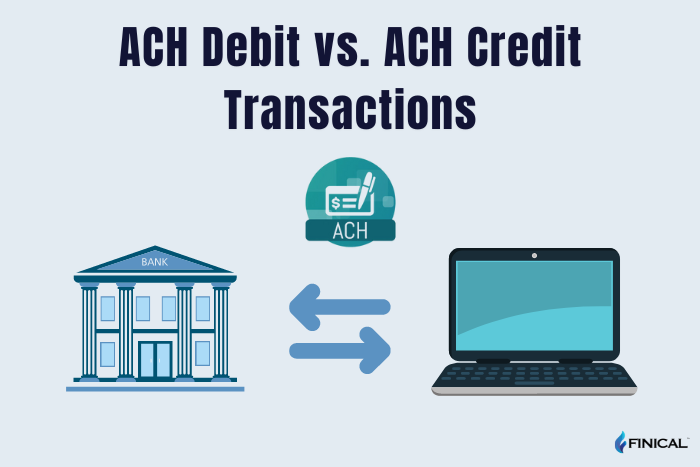The automated clearing house (ACH) network empowers you to send and receive money with lightning speed. You can use ACH transactions to pay bills, transfer money to vendors and suppliers, or run payroll for your small business.
But if the terminology sounds unfamiliar, it may be helpful to brush up on ACH debit vs. ACH credit transactions. How does each one work, and how do they differ?
What Is the Automated Clearing House Network?
Since 1974, the automated clearing house network has provided the digital infrastructure to conduct financial transactions. The ACH network serves as a hub, connecting financial institutions, businesses, and consumers.
You can conduct ACH transactions through your local bank, but apps like PayPal and Venmo also use the ACH network to facilitate the transfer of funds.
ACH Transactions: Debit vs. Credit
ACH transactions come in two forms: ACH credits and ACH debits. The terms may bear these labels on your monthly bank statement or be recorded as a pending ACH credit or debit. Here’s how each ACH transaction works.
How Does ACH Debit Work?
An ACH debit refers to money coming out of your bank account. ACH debits are helpful for paying bills since you can set up recurring payments using the ACH network.
To initiate an ACH debit, you’ll simply submit a payment request to the network. You’ll need the account information for both bank accounts — yours and the recipient’s — but the ACH network will handle the details automatically.
Be advised that an ACH transfer can take anywhere from one to five business days, so if you use ACH debits to pay your bills, you’ll need to make sure you pay far enough in advance that you meet the payment deadline.
Additionally, some banks may charge a small fee for outgoing ACH transactions. This means that if you use ACH debits to cover your bills, you may need to account for these additional charges. Check with your bank to see if they charge a fee or if they set a limit on how much you can transfer through ACH debits.
How Does ACH Credit Work?
An ACH credit refers to money coming into your account. As such, ACH credits are always initiated by the person paying you. For example, customers paying you would need to initiate an ACH credit after receiving an invoice for goods and services.
ACH credits are sometimes referred to as push transactions. This is because funds are being pushed from one bank account to another.
Because ACH credits take time to fully process, it’s not uncommon to see “pending ACH credit” listed on your bank statement to reflect a payment that a customer has initiated but has not cleared the ACH network.
Key Differences Between ACH Debit and ACH Credit Transactions
ACH debits and ACH credits differ in which direction the money flows. Here’s a quick snapshot of the key differences between ACH debit vs. ACH credit transactions:
Who Receives the Money?
In an ACH debit transaction, you send money to a recipient, such as when you pay an employee, contractor, or vendor.
In an ACH credit transaction, you receive money from a recipient, such as when a customer pays the balance of an invoice.
Who Initiates the Transaction?
Every ACH transaction is initiated by the person paying. This means that you can only initiate an ACH debit transaction. If someone owes you money (i.e., an ACH credit), then you can only ask them to pay you and wait for them to initiate the ACH credit process.
Are ACH Transactions Right for Your Small Business?
ACH transactions have numerous benefits for small businesses. They allow small business owners to do things like:
- Set up direct deposit/payroll.
- Set up recurring vendor payments.
- Receive payments from customers.
- Make quarterly estimated tax payments.
- Avoid high fees on certain types of credit cards.
However, there are some limitations to ACH transactions, including:
- Potential processing fees.
- Processing delays (up to five business days).
- Lack of availability for international business transactions.
- Caps on the amount you can transfer using the ACH network.
Additionally, many credit card providers offer reward programs every time you use the card. ACH debits mean you won’t get access to these benefits.
Still, the speed and convenience of ACH transactions make them ideal for certain types of small business expenses, such as payroll. As long as you can avoid the limits and obstacles behind ACH transactions, you can make good use of this transaction method in your business.
Financial Solutions that Fit Every Business
ACH transfers are just one of many solutions that enhance modern business. Want to learn more? Finical can help. We provide point-of-sale equipment and other tools to help you process payments quickly and easily.
For more information, contact Finical today.


